Arcofolin® Methylfolate
Section Overview
- Arcofolin® Methylfolate: Breaking the Paradigm of Compromised Long-Term Stability in Liquid Formulation
- The Role of Folate in Health and Disease
- Benefits of Folate
- Methylfolate as an Alternative to Folic Acid
- Arcofolin® Is the Monosodium Salt of L-5-Methyltetrahydrofolic Acid
- Arcofolin® Enables the Advantages of Liquid Formulation
- Long-Term Liquid Stability, Including Liquid Formulations
- References
ARCOFOLIN® METHYLFOLATE: BREAKING THE PARADIGM OF COMPROMISED LONG-TERM STABILITY IN LIQUID FORMULATION
What is Methylfolate?
Methylfolate (5-MTHF) is a natural folate form that is directly bioavailable and therefore easy for the body to use. It does not require any extra metabolic steps to be absorbed and enter circulation once ingested. This makes it superior to folic acid, which needs to be activated before it can be used by the body. 5-MTHF does also not cause unmetabolized folic acid (UMFA) to raise in plasma1, which has been associated with the risk of cancer 2,3 and autism spectrum disorder4.
THE ROLE OF FOLATE IN HEALTH AND DISEASE
What is Folate good for?
Folate is an essential, water-soluble B vitamin and as such plays an essential role for human body from preconception until old age. The vital functions of folate include:
- Providing building blocks for DNA biosynthesis needed for cell growth, renewal, and function
- Providing methyl groups for more than 100 cellular reactions such as DNA methylation which regulates gene expression by epigenetic mechanisms
- Ensuring normal metabolism and plasma concentrations of the toxic amino acid homocysteine
- Participating in the build-up of amino acids needed to produce cellular proteins
Sufficient folate levels are crucial during all stages of life. For example, during pregnancy it reduces the risk of growth retardation and birth anomalies and in older adults it promotes health of the nervous system, hematopoietic system, cardiovascular system, gastrointestinal system, and bone.*
BENEFITS OF FOLATE
Recommended Intake of Folate
- The recommended daily intake of folate for adults is 400 µg/day.
- Recommended intake increases during pregnancy and lactation (500 – 800 µg/day) to support the needs of the fetus and infant, respectively.
- Compared to adults, infants require higher amounts of folate per kg body weight.
Because folate is not produced by the human body, it must be obtained from dietary sources to maintain normal body functions. Folate is naturally present in some foods such as vegetables and animal foods such as meat and is added to foods and food supplements to enable a greater portion of the population to meet the daily requirements of this nutrient.
Meeting the daily recommended intake of folate via the natural diet can be challenging. For example, achieving 400 µg/day via the diet would require consumption of one kilogram of spinach or 500 grams of liver per day. In addition, folate exists as large complexes with polyglutamate in natural foods and proper absorption from the diet requires it to be released from these complexes. Release of folate from its polyglutamate binding could be a rate limiting step in the absorption process. Thus, the bioavailability of dietary folate is not as efficient as when folate is taken in free forms from fortified foods or food supplements. Approximately 5 to 10 mg of folate are stored in the human liver, an amount that is sufficient to support bodily needs for up to three months. If folate intake is insufficient or folate is not properly absorbed, a deficiency can develop within approximately three months.
Causes of Folate Insufficiency
Folate insufficiency can be related to the stage of life, lifestyle, and medical conditions or diseases. For example, it can develop during pregnancy and lactation, and can be found in infants and children as well as the elderly. In these cases, folate insufficiency is often the result of higher daily requirements or malabsorption.
Folate insufficiency can also be related to food selection such as the consumption of foods not fortified with folic acid. Medical conditions that affect the gastrointestinal system, the liver or kidneys may interfere with metabolism or absorption of folate. For example, infection with Helicobacter pylori, bariatric surgeries, ilial resections, alcoholism, or medications that influence the intestinal pH can all affect folate absorption. Conditions associated with reduced gastrointestinal motility such as obesity and Parkinson’s disease can influence folate absorption.
Relationship of Folate Insufficiency and Disease
Folate insufficiency is causally related to several diseases, the most well-known of which is anemia (Figure 1). Low folate is also related to pregnancy complications and poor outcomes such as neural tube defects. Folate deficiency may affect growth and development of infants and children, may cause infertility in men and women, and has been related to the risk of stroke, dementia, depression and bone fractures in the elderly, as well as cardiovascular diseases and fatty liver.
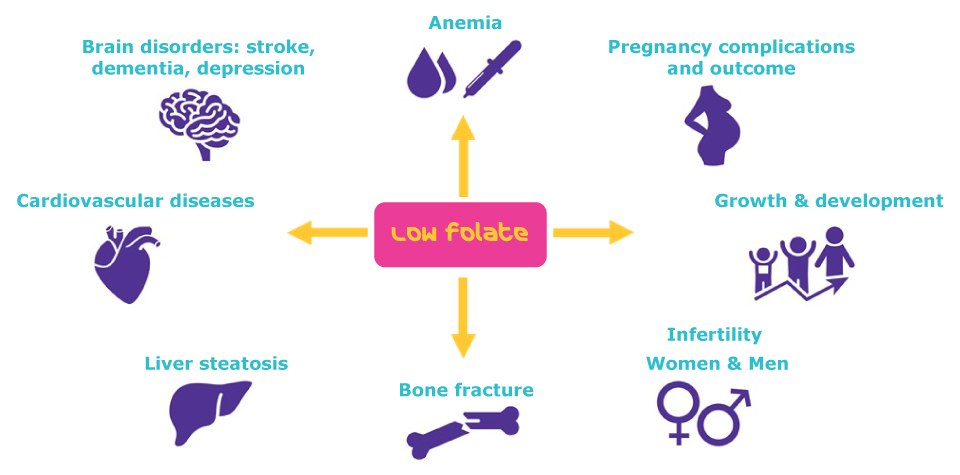
Figure 1.Low folate may lead to anemia, pregnancy complications and outcomes, growth & development of children, infertility of women and men, bone fracture, liver steatosis, cardiovascular diseases, and brain disorders like stroke, dementia, and depression.
The Benefits of Folate Supplementation
Folate supplementation is an effective, safe, and inexpensive approach to promote better health, healthy aging, and to mitigate the risk of the disease and conditions shown in Figure 1. Supplementation using a liquid formulation containing a stable form of folate is particularly appealing for its convenience and ease of use for those with difficulty swallowing or reduced saliva volume. A liquid formulation can benefit people taking medications which influence gastrointestinal pH, those with malabsorption syndromes such as celiac or Crohn's disease, intestinal resection, inflammatory bowel disease, and those with reduced gastrointestinal motility.
Folic acid is a synthetic compound not present in nature. To be used by the body, folic acid must be metabolized in the liver via a series of conversions into 5-methyltetrahydrofolate (5-MTHF), the major physiological form of folate found in blood (Figure 2). After consuming folic acid, some unmetabolized folic acid (UMFA) remains in the circulation.
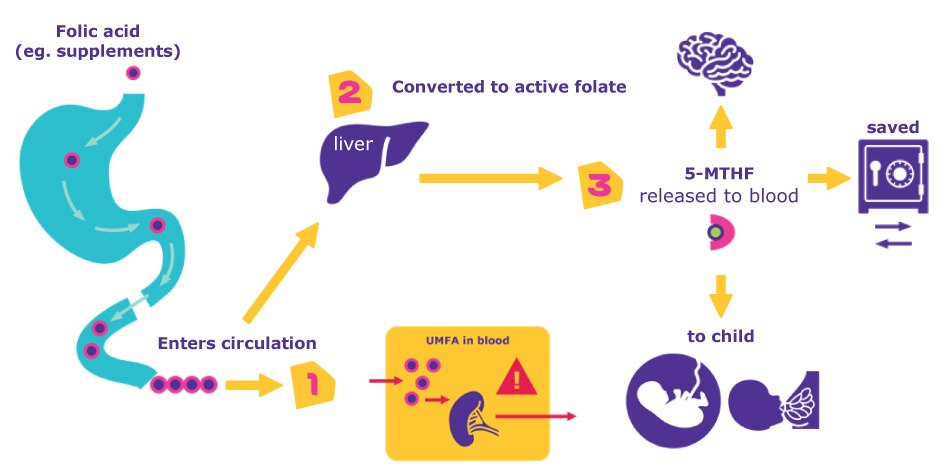
Figure 2.Folic acid from supplemented or fortified foods is not bioactive until converted in the liver to active folate or 5-MTHF. Thereafter, 5-MTHF is being released to the blood where it can go to the organs that need 5-MTHF or save it. During pregnancy and lactation, this 5-MTHF can cross to the fetus or child. Small amounts of unmetabolized folic acid (UMFA) will also reach the fetus via the placenta or child via breastmilk.
Concerns Related to Unmetabolized Folic Acid
Several population studies have shown that small amounts of UMFA are detectable in the blood of almost everyone exposed to folic acid, either from fortified foods or supplements, with the highest levels being found in the youngest and oldest age groups (Figure 3). UMFA is also detectable in people with liver or kidney dysfunction, in more women compared to men, and in breast milk if the mother is taking folic acid through fortified food or supplements.2,3,4,5
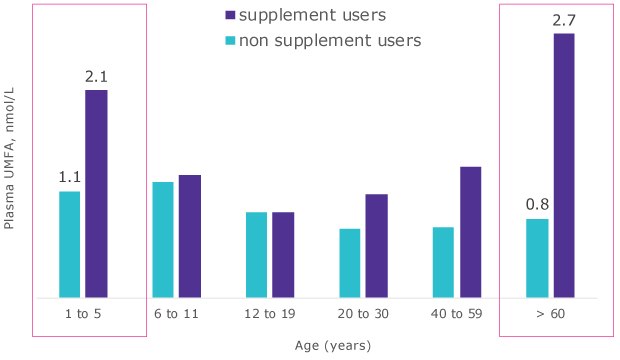
Figure 3.UMFA is detectable across all age ranges, with the highest levels found in infants, and the elderly.
During pregnancy and lactation, 5-MTHF and UMFA can cross the placenta to the fetus and to the infant via breast milk (Figure 2). Approximately 80 – 85% of the total folate in breast milk is present as 5-MTHF (Figure 4). Women who do not take folate supplements or consume fortified foods do not have folic acid in breast milk. In contrast, up to 23% of the total folate in breast milk can be present as UMFA in women from countries applying fortification with folic acid (Figure 3). The percentage of UMFA can reach up to 50% of total folate in human milk of women who take high-dose folic acid through food supplements; this means that infants being breastfed will be exposed to UMFA.
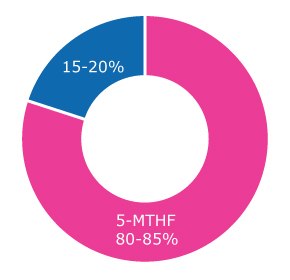
Figure 4.1.The physiological and quantitatively dominant form of folate in breastmilk is 5-MTHF, making up 80-85%. This means women not exposed to folic acid supplementation (either via food fortification or external supplementation) do not have folic acid in breast milk.
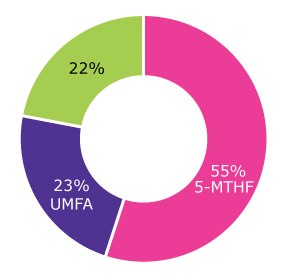
Figure 4.2.Women from countries applying fortification with folic acid have unmetabolized folic acid (UMFA) in breast milk that make up 23% of total folate in breast milk.
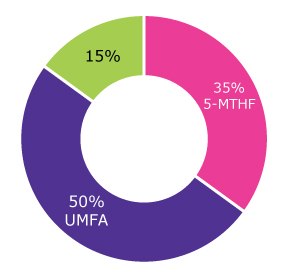
Figure 4.3.Women taking 1 mg/d folic acid und exposed to fortification: If women takin additional supplements containing golic acid, this UMFA can make up 50% of total folate in breast milk, which means that infants at a very early age are exposed to UMFA when exposed to breast milk of a mother consuming folic acid as opposed to 5-MTHF.
In general, anyone exposed to folic acid from supplements or fortified foods, especially if the amount is above 200 µg/day, will have some amount of UMFA in the blood. Although several studies have shown associations between UMFA and health outcomes such as an increased risk of autism if the mother was using high dose folic acid during pregnancy, an increased risk of cancer, and immune system disorders, more evidence is needed to confirm safety of UMFA.
Methylfolate as an Alternative to Folic Acid
An alternative source of folate has become available for nutritional supplementation and fortification.
Methylfolate (5-MTHF), such as Arcofolin® offers advantages in terms of absorption and bioavailability when compared to folic acid. While optimal binding of folic acid to its cellular receptor in the upper part of the intestine occurs at a pH of 5.5, optimal binding of 5-MTHF to its receptor can take place at a wider pH range. As pH increases along the intestine, the rate of folic acid absorption declines (Figure 5). If folic acid is provided in a liquid form, the time needed to pass the intestine is rather short and the absorption of 5-MTHF may override that of folic acid. Another factor that limits folic acid bioavailability is that when tissue folate is high, the conversion of folic acid to 5-MTHF is slowed and thus more UMFA will appear in blood.
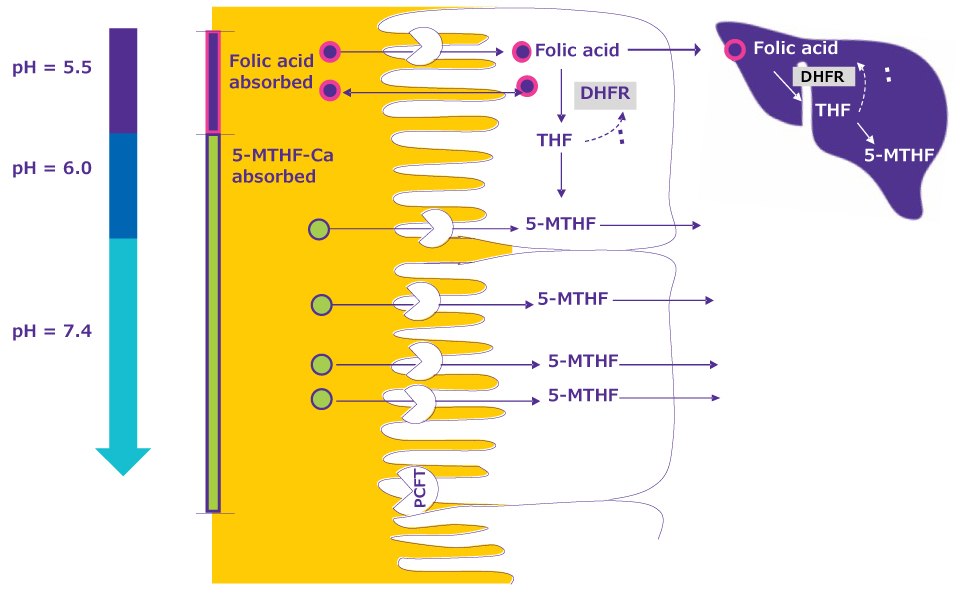
Figure 5.As the pH increases along the intestine, the rate of folic acid absorption declines compared to that of 5-MHTF. Meaning 5-MTHF can be absorbed over a wider pH range, correlating better bioavailability and absorption compared to folic acid.
In contrast, 5-MTHF is absorbed in the intestine and enters the circulation more efficiently than folic acid (Figure 6). From the circulation, it is distributed to the organs, across the placenta, into breast milk or become stored in tissues. 5-MTHF makes up approximately 97% of the total folate in blood.
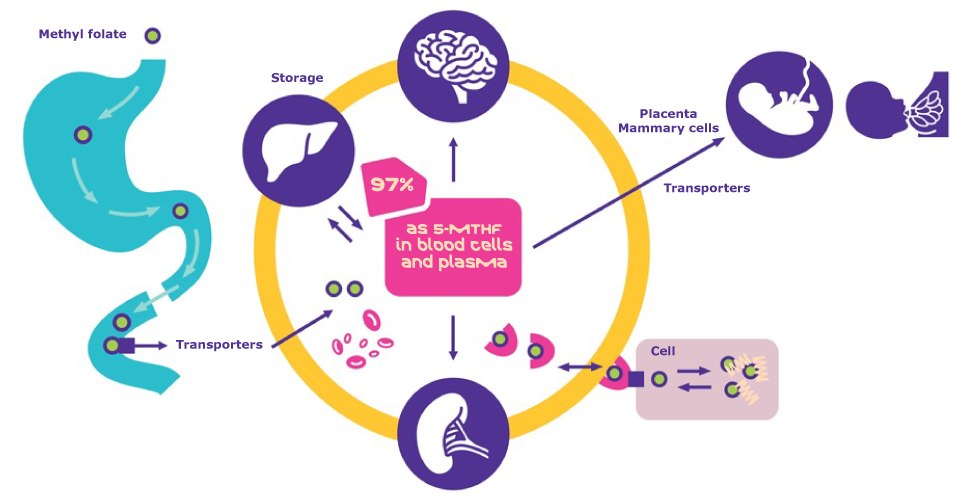
Figure 6.Supplementation with 5-MTHF during pregnancy and lactation: 5-MTHF is absorbed, disturbed, stored and promptly utilized. As the physiological and dominant form of folate, 5-MTHF makes up to 97% of total folate in blood.
Arcofolin® is the monosodium salt of L-5-methyltetrahydrofolic acid
Arcofolin® is the monosodium salt of L-5-methyltetrahydrofolic acid (or L-methylfolate (5-MTFH)) that contains a methyl group and is a reduced form of folate compared to the oxidized form of folic acid (Figure 7). The bulk material consists of only one crystalline modification, which can be confirmed by x-ray powder diffraction.
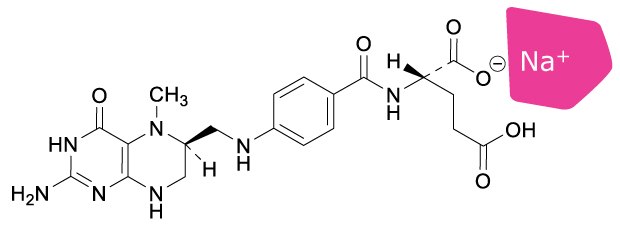
Figure 7.Arcofolin® is the monosodium salt of methyl folate.
A comparison of the bioavailability of Arcofolin® and folic acid was studied in a randomized controlled double-blind crossover study (Figure 8). Blood or plasma concentrations of 5-MTHF were higher after Arcofolin® dosing compared to those of folic acid. The highest concentrations were reached one hour faster with Arcofolin® compared to folic acid. Over the course of eight hours, more than twice the amount of Arcofolin® was measured in plasma compared to folic acid. In addition to its rapid bioavailability, Arcofolin® is not associated with a rise in plasma UMFA.
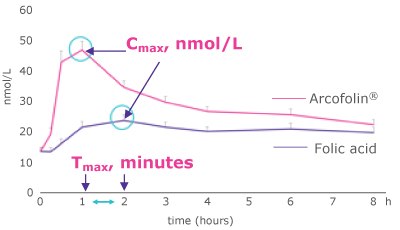
Figure 8.1.In a double blinded in-human bioavailability study, maximum concentrations of Arcofolin® in plasma could be recorded 1hour faster compared to folic acid, highlighting that Arcofolin® leads to prompt supplementation results.
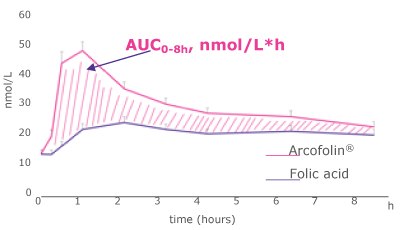
Figure 8.2.As part of that same study, maximum concentration for Arcofolin® in plasma could be recorded as 2x higher vs folic acid, highlighting that more of Arcofolin® can be absorbed by the human body vs folic acid.
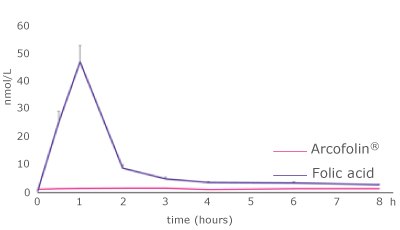
Figure 8.3.Contrary to folic acid, Arcofolin® did not cause unmetabolized folic acid (UMFA) as shown by that same in-human bioavailability study.
Arcofolin® Has Higher Purity Compared to Other Folates
The unique crystalline modification of Arcofolin® enables an unmatched robustness of formulation processes and products. Because the material consists of only one stable crystalline modification, Arcofolin® does not require different production procedures, it does not have different stability behaviors, nor is there a possibility of it converting from one form to another during storage which can influence stability and bioavailability.
The high purity of Arcofolin® is shown in Figure 9 which compares it with L-methylfolates. The higher the purity, the higher the potency of the folate; Arcofolin® has a potency of up to 95% compared to two other folates with potencies of 59% and 80% respectively.
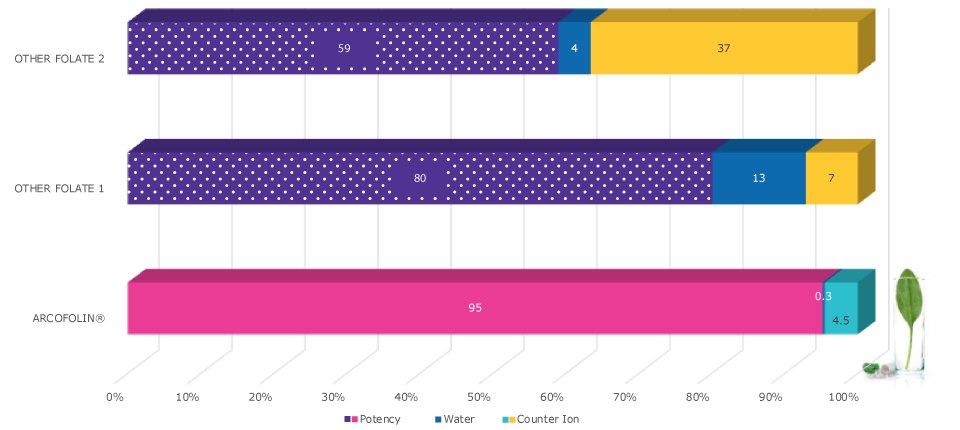
Figure 9.Purity of Arcofolin® in comparison to other forms of L-methylfolates. Other folate 1: inorganic MTHF-salt; Other folate 2: organic MTHF-salt. The purple bars of folate no.1 and 2 represent the potency of the material. The purer a material is, the higher is its potency. These other folates comprise potencies of 59 and 80% whereas Arcofolin®, here represented by the pink bar, has a potency of up to 95%. How do we reach such a high potency? This is mainly due to different counter ions and different water contents. In folate no1 and 2 the counter ion contents are represented by the yellow bars. No 2 consist of 37% counter ion, no1 is better and contains only 7%, however, the lowest amount of counter ion is found in Arcofolin®, with only 4.5%. The same applies for the water contents of the three different folates. While folates no.1 and 2 contain 13% and 4% of water, respectively. Arcofolin®, has a markedly lower water content of just about 0.5%.
High potency is achieved because of different counter ions and different water content, which are components of folates that have no therapeutic purpose, and therefore should be minimized. In folates #1 and #2, counterion content is 7% and 37% respectively while Arcofolin® is 4.5%. The same applies for water content; while folates #1 and #2 contain 13% and 4% water respectively, Arcofolin® has a markedly lower water content of approximately 0.3%.
Convenient Storage, Handling, and Processing of Arcofolin®
The material characteristics of Arcofolin® allow more convenient storage, handling, and processing. Arcofolin® is less hygroscopic than other folates, making it more stable during handling and production. As demonstrated by dynamic vapor sorption, Arcofolin® absorbed two times less water compared to another folate exposed to the same conditions (Figure 10).
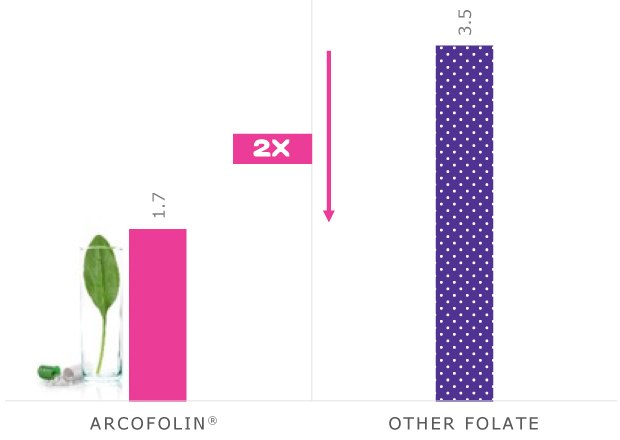
Figure 10.Arcofolin® is 2x less hygroscopic than other folates. Other folate: inorganic MTHF-salt. Arcofolin® is less hygroscopic than other folates, thus making it more stable during handling. During the measurement of dynamic vapor sorption (DVS), Arcofolin® adsorbed two times less water compared to another folate exposed to the same conditions.
Because of its low hygroscopicity, Arcofolin® will not stick to packaging as much as other folates making it easier to handle. It also has outstanding stability during storage at room temperature. Figure 11 shows the content of the degradation product Mefox as a function of the storage period. Mefox content in another folate increased from 0.15% to 0.6% in 36 months. In contrast, the Mefox content in Arcofolin® remained consistent during storage at a very low level of less than 0.1%. This behavior has also been observed for other impurities, confirming the stability of Arcofolin® at room temperature.
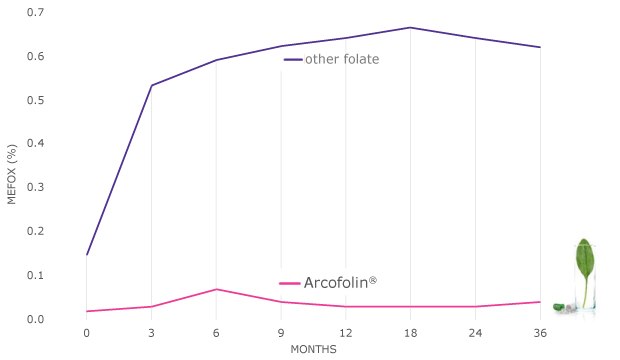
Figure 11.Arcofolin® bulk material is highly stable when stored at room temperature. This figure shows the content of the degradation product Mefox as a function of the storage period. The purple line represents the Mefox content in another folate which increases from 0.15% up to 0.6% after 36 months. On the other hand, the Mefox content in Arcofolin®, which is represented by the pink line, stays practically consistent during storage at a very low level of less than 0.1%, highlighting the outstanding stability of Arcofolin® during storage at room temperature
ARCOFOLIN® ENABLES THE ADVANTAGES OF LIQUID FORMULATION
Arcofolin®, a unique folate that offers long-term stability in liquid form, provides important benefits to consumers seeking to supplement their diets to support health and well-being, prevent disease, and for adjunctive care. It has a higher bioavailability compared to folic acid, is more rapidly absorbed, and does not lead to elevated levels of UMFA.
Because Arcofolin® has been demonstrated to be stable for at least twelve months in liquid formulation, it helps to support the nutritional requirements of people who prefer to take supplements in liquid form. This is a more convenient form of administration compared to tablets or capsules and more effectively provides the benefits of this important vitamin across all ages, especially the elderly or children who may have difficulties swallowing solid dosages.
The Advantages of Folate in a Liquid Form
Several barriers can negatively impact folate intake and absorption both from food and food supplements; even if the same amount of folate is ingested, the amount of folate reaching the circulation can be completely different. If folate is taken via a pharmaceutical solid form such as a capsule or a tablet, time is needed for dissolution and release of folate from the solid matrix. Meals can have major impact on the absorption. For example, after a heavy or fatty meal, at least eight to ten hours are needed for the stomach to empty, meaning that it takes a long time for the folate to reach the intestine where absorption can take place. In contrast, absorption is faster if folate is taken on an empty stomach or after a light meal.
As a liquid formulation, Arcofolin® is highly stable, readily bioavailable, and overcomes several barriers related to intake and absorption making it an excellent source of 5-MTHF. A liquid oral route of delivery is often preferred for the elderly and other age groups at risk of folate deficiency, people with poly-medications or diseases that prevent swallowing or absorption of folate from a solid form. Products for infant and sports nutrition benefit from liquid formulation with a stable source of 5-MTHF.
LONG-TERM LIQUID STABILITY, INCLUDING LIQUID FORMULATIONS
Studies have also confirmed the stability of Arcofolin® when stored without packaging in an open and unprotected container at 25 °C at 60% relative humidity (Figure 12), and under stress conditions of 40 °C and 75% relative humidity for up to 12 months (Figure 13).
Arcofolin® also has long-term stability in liquid applications. Folic acid recovery drops rapidly from a starting point of 99% to 9% within the first month and is 0% after 12 months. In contrast, Arcofolin® retains a recovery of 93% even after 12 months in solution.
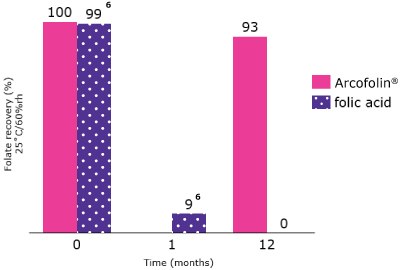
Figure 12.Arcofolin® offers improved long-term stability in solution as compared to folic acid. This figure shows the liquid stability of Arcofolin® (represented by the pink columns) vs. the stability of folic acid (represented by the purple columns). The folic acid recovery drops rapidly from originally 99% to 9% within the first months and is 0% after 12 months. Arcofolin® on the other hand, retains a recovery of 93% even after 12 months in aqueous solution.
References
* These statements have not been evaluated by the FDA. This product is not intended to diagnose, treat, cure or prevent any disease.
To continue reading please sign in or create an account.
Don't Have An Account?